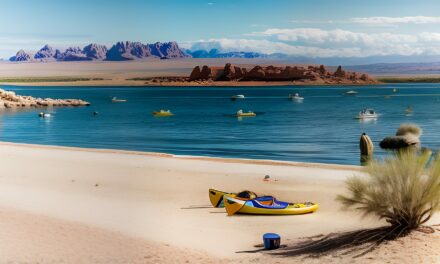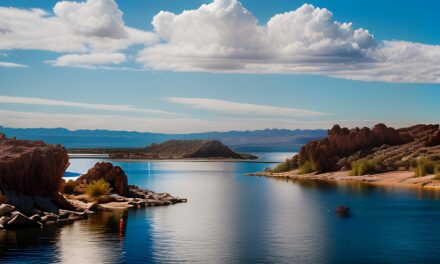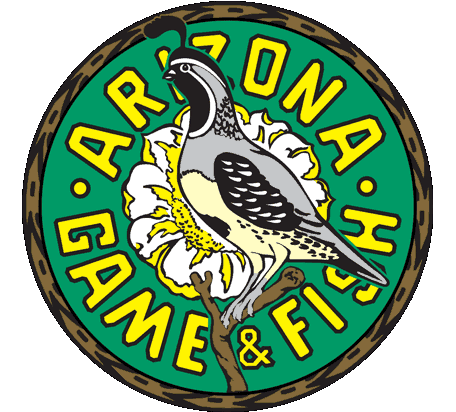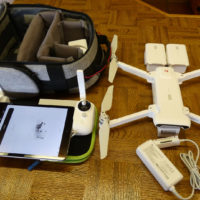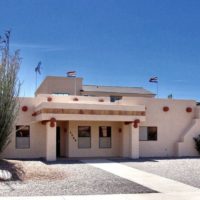Texas game wardens were on patrol Monday to help maintain order and
safety in East Texas, particularly in southeastern counties hardest hit
by Hurricane Rita this past weekend. Meanwhile, five Texas state
parks near the Louisiana border were heavily damaged by the hurricane,
many others sustained moderate damage and some 20 state parks are still
closed as teams assess damage.
– Lake Havasu
Department game wardens normally stationed in East Texas worked
throughout the weekend responding to calls for assistance and
patrolling areas impacted by the storm. Another 50 wardens
stationed in the Beaumont-Port Arthur region focused on that hardest
hit area. And close to 50 game wardens from across West and North
Texas have also been called to East Texas. All Texas agencies
working Rita response are being coordinated through the Governor’s
Emergency Management Office.
Game wardens
have special training, boats and equipment to aid in flood rescues, but
maintaining law and order has emerged as another key task in Rita’s
wake. Communities left mostly empty by evacuations and the lack
of fuel, water and power for lighting had increased the possibility of
looting.
An
additional 50 game wardens were deployed Sunday to four storm-ravaged
counties where local officials had expressed public safety concerns:
Jasper, Newton, Sabine, and Tyler.
“There was a
concern that looting would increase at nighttime,” said Lt. Col. Craig
Hunter, who helped organize TPWD’s efforts from the state emergency
center in Austin. “We had a report of a bank burglary Sunday
morning in east Texas, and there were some reports of localized
looting.”
Hunter said
game wardens arrested four people Jasper on Sunday for looting.
Also in that area, wardens used boats to evacuate 26 elderly people
from a nursing home threatened by rising floodwaters.
On Saturday
afternoon, game wardens, sheriff’s deputies, state troopers, and local
fire rescue workers evacuated some 1,500 people from housing
subdivisions below Lake Livingston dam north of Houston, where Rita’s
waters had compelled authorities to release a high volume of water,
causing flooding. Game wardens ferried nine boatloads of evacuees
to safety in the area late Saturday.
Texas state parks suffered widespread facilities damage across East Texas, although no one was hurt.
About 30 families were evacuated from Lake Livingston
State Park shortly before high winds and heavy rains began lashing the
area late Saturday. Park peace officers and game wardens
evacuated the families to a school that had been converted to a shelter
nine miles away.
“Most of
those families were hurricane evacuees who were road-weary and worn out
after plowing through traffic from Houston, and many of them did not
want to leave, but I was certainly glad we did evacuate the park,” said
Brent Leisure, state park regional director for eastern Central
Texas. “There were many, many big trees that blew down all over
that park and several downed power lines.”
Leisure
helped lead a disaster response team for TPWD’s State Parks Division
that involved dozens of employees. Several regional directors and
others monitored the storm and coordinated statewide efforts from
Bastrop State Park. Recovery teams that had prepared in advance
began field work Sunday and Monday. Fifty state park employees
have been deployed to provide security for park resources, assess
damage and begin initial cleanup and stabilization.
Five state
parks near the storm’s direct path were heavily damaged. These
include Sea Rim, Sabine Pass, Village Creek, Lake Livingston and Martin
Dies, Jr.
The hardest
hit was Martin Dies, Jr. State Park just west of Jasper, where division
employees described the damage as “catastrophic.” The hurricane
blew down dozens of trees, blocking access along all roadways and
causing extensive damage to facilities and structures. Impacts include
minor roof damage to seven buildings; major roof damage to one cabin,
one restroom, the park nature center and six screened shelters; and
structural damage to the assistant manager’s residence. Three
screened shelters and two host camp sites were destroyed.
At Sabine
Pass Battleground State Historic Site, where about $2 million in
facility improvements was done in 2004, 16 new shade shelters and the
park residence were destroyed. According to reports, the storm
also “completely eroded” a concrete bulkhead along the Sabine
River/Ship Channel, posing the threat that it could lean or fall toward
the channel. TPWD had rebuilt 1,400 feet of the bulkhead in 2004,
adding handrails and making it wheelchair-accessible, with breaks in
the rails to provide fishing and overlook stations.
At Sea Rim
State Park on the beach near Port Arthur, teams reported “severe,
widespread damage.” This includes minor damage to the park
residences and wastewater plant; major damage to the state park
maintenance area and boat barn.
At Village
Creek State Park northeast of Houston, although manmade structures were
relatively undamaged, reports said the widespread debris “will take a
commercial salvage operation before the site can be cleared enough to
re-open the park.”
Lake
Livingston State Park, like many other parks across forested East
Texas, had many downed trees. Managers say earlier evacuations
and park closures helped prevent injuries and damage that can result
from storm-blown trees and large limbs. At Lake Livingston, as in
other parks, cleanup and debris removal is already underway.
At TPWD’s
Sea Center Texas in Lake Jackson, the combination fish hatchery and
visitor aquarium center lost 97 percent of its red drum, spotted
seatrout and flounder broodfish when water temperatures soared after
backup power generators failed. The good news is fish in the
front aquariums which are accessible to visitors somehow survived the
power outage.
Employees
from TPWD’s Infrastructure, State Parks, Wildlife, Coastal and Inland
Fisheries divisions began meeting Monday to devise plans to assess
damage to various agency sites and begin prioritizing repairs.
Although it’s too early to say what the cost will be, it is expected to
be significant.
Currently,
20 Texas state parks are closed temporarily because of the
hurricane. Some are expected to begin reopening this week,
starting Tuesday. State parks continue to provide free entry and
campsites to hundreds of evacuees.
For the
latest information about state park temporary closures and state parks
able to host hurricane evacuees, people should phone the TPWD state
park Customer Service Center reservations line at (512) 389-8900.
A complete list of state parks, including a statewide map and regional
maps showing park locations, is on the TPWD Web site.
– Lake Havasu




